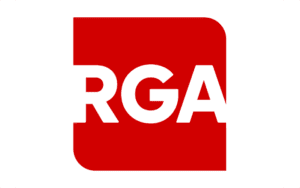A guide to finding the best affordable health insurance plan

But those without access to company-sponsored coverage need to shop around for their own health plan and cover the full cost of the premium, which raises the question – where can they find the best affordable health insurance policies?
Read more: Top health insurance providers for self-employed Americans
How does health insurance work in the US?
Health insurance is a policy designed to help offset the costs of medical treatment by covering a portion of the professional and hospital fees incurred. According to the government’s health insurance exchange website HealthCare.gov, this type of coverage comes in several forms aimed at meeting the varying needs of policyholders. These are:
Exclusive Provider Organization (EPO): This is a managed care plan where services are covered only if the doctors, specialists, or hospitals are in the plan’s network – except in cases of emergency.
Health Maintenance Organization (HMO): This type of health insurance plan often limits coverage to care from doctors who work for or are contracted with the HMO. Policies generally do not cover out-of-network care except in an emergency. Plans may likewise require that a policyholder live or work in its service area to be eligible for coverage. HMOs typically provide integrated care and focus on prevention and wellness.
Point of Service (POS): In this kind of plan, policyholders pay less if they access doctors, hospitals, and other healthcare providers belonging to the plan’s network. POS coverage also requires the insured to get a referral from their primary care doctor for them to see a specialist.
Preferred Provider Organization (PPO): This health plan allows policyholders to pay less for healthcare if they choose to get treatment from providers in the plan’s network. However, they can also access doctors, hospitals, and providers outside of the network without a referral for an additional cost.
Health insurance plans are also offered in four categories based on how the costs are split between the policyholder and the insurer. These are Bronze, Silver, Gold, and Platinum, which are also referred to as the “metal tiers.” Here’s how the costs are split, according to HealthCare.gov.
Bronze – 60% health insurer, 40% policyholder
Silver – 70% health insurer, 30% policyholder
Gold – 80% health insurer, 20% policyholder
Platinum – 90% health insurer, 10% policyholder
The agency noted, however, that the category “[has] nothing to do with [the] quality of care.”
Read more: Revealed – 10 largest health insurance providers in the US
What does health insurance cover?
One of the changes the Affordable Care Act (ACA) has implemented in the country’s healthcare system is the standardization of insurance plan benefits. Prior to this, the benefits offered by insurance companies varied significantly between policies. Currently, US health insurance plans are required to cover a list of 10 “essential health benefits,” consisting of:
Ambulatory patient services
Emergency services
Hospitalization
Pregnancy, maternity, and newborn care
Mental health and substance use disorder services, including behavioral health treatment
Prescription drugs
Rehabilitative and habilitative services and devices
Laboratory services
Preventive and wellness services and chronic disease management
Pediatric services, including oral and vision care
Birth control and breastfeeding coverage are also required benefits. Dental and eye care coverage for adults, meanwhile, are not considered essential benefits but are available as optional add-ons, along with medical management programs.
Read more: Top 10 health insurance companies in the US
What factors impact the cost of health insurance?
According to HealthCare.gov, insurance companies can only account for five factors when determining premiums under the healthcare law. These are:
Age: Premiums can be up to three times higher for older people than for younger ones.
Location: Differences in competition, state, local regulations, and cost of living also impact health insurance rates.
Tobacco use: Insurers can charge tobacco users up to 50% more than those who do not smoke.
Individual vs. family enrollment: Insurance providers can also charge more for a plan that also covers a spouse and dependents.
Plan category: The different plan categories – Bronze, Silver, Gold, and Platinum – also have an effect on premium prices.
The government website noted that states can limit how much impact these factors have on insurance rates but prohibited them from using medical history and gender in calculating premiums.
“Insurance companies can’t charge women and men different prices for the same plan,” HealthCare.gov explained. “They also can’t take your current health or medical history into account. All health plans must cover treatment for pre-existing conditions from the day coverage starts.”
Read more: Millennials find health insurance too expensive: Survey
Where can you find the least expensive health insurance plans?
Even if employer-sponsored coverage is not an option, there are several ways for many Americans to avail of cheap health insurance plans, according to personal fintech company MoneyGeek. Here are some of them:
1. Medicaid
Medicaid is the most affordable choice, according to the firm, but applicants must meet certain eligibility requirements, which vary depending on the state they live in.
The government-funded program offers free or affordable health insurance coverage to low-income individuals and families. Currently, 38 states allow income to be the sole basis of qualification. The cut-off is usually 133% of the federal poverty level (FPL), which is about $17,774 per person. A bigger household means a higher income limit. The income cut-off is the same for almost all 38 states, except Alaska and Hawaii.
The table below from MoneyGeek details the Medicaid cut-off limit for each household size.
Household size
Income-level cut-off
Alaska cut-off
Hawaii cut-off
1
$17,774
$22,204
$20,452
2
$24,040
$30,043
$27,655
3
$30,305
$37,881
$34,859
4
$36,570
$45,719
$42,062
5
$42,835
$53,558
$49,266
6
$49,100
$61,396
$56,470
7
$55,366
$69,235
$63,673
8
$61,631
$77,073
$70,877
Alabama, Florida, Georgia, Kansas, Mississippi, North Carolina, South Carolina, South Dakota, Tennessee, Texas, Wisconsin, and Wyoming, meanwhile, impose additional eligibility criteria, including child guardianship or being above 65-years old.
Medicaid plan holders have access to free emergency care, family planning, and child healthcare. Depending on their state and income levels, they may also have copays for doctor visits, inpatient hospital care, and prescription medication.
Read more: Medicaid expansion ballot campaigns near signature threshold
2. Health insurance marketplace
For many low-income Americans, their state’s health insurance marketplace is another good place to start searching for a policy that fits their needs. Here, they can compare plans for coverage and affordability, and get answers to any questions or clarifications they have about healthcare insurance. This is also where they can find out if they qualify for Medicaid, tax credits, or lower premiums. Parents can enroll their kids in the Children’s Health Insurance Program (CHIP) through the marketplace as well.
Individuals can sign up for a health insurance plan during an open enrollment period, which typically runs from November 1 through January 15. But even if this period has ended, they may still be able to secure coverage if they have experienced a qualifying life event, including getting married, having a baby, and losing their previous insurance. Coverage begins about two to six weeks after enrollment.
3. Medicare
For US citizens and permanent residents 65 and older, they can avail of the cheapest health insurance through another government-funded program, called Medicare. The program is also accessible to younger people with certain disabilities and those with end-stage renal disease (ESRD) or permanent kidney failure that requires dialysis or a transplant.
Medicare consists of four parts:
Medicare Part A (hospital insurance): This covers inpatient hospital stays, care in a skilled nursing facility, hospice care, and some home health care.
Medicare Part B (medical insurance): This pays out for certain doctors’ services, outpatient care, medical supplies, and preventive services.
Medicare Part C: Now called the Medicare Advantage Plan, this combines all benefits and services under Parts A and B in one plan.
Medicare Part D (prescription drug coverage): This helps cover the cost of prescription medication, including most recommended shots or vaccines.
The first two parts are offered through the government, while the last two can be purchased through private insurance providers.
Read more: Medicare, private insurers eyed to cover diabetes prevention programs
4. Short-term health insurance plans
Short-term health insurance plans are designed to fill temporary coverage gaps and provide protection for up to one year, so the benefits are not as comprehensive as policies in the marketplace. Short-term plans can also be canceled anytime without the need to pay penalty fees.
Because these are not regulated by the government, the benefits, coverage limits, exclusions, and premiums vary widely, depending on the health insurance provider. Coverage typically includes physician visits, and emergency and preventative care. Some plans may also cover prescription drugs. Pre-existing medical conditions are not covered.
Applicants may also be required to complete a medical questionnaire to assist the insurance carrier in determining if they should be approved for coverage.





